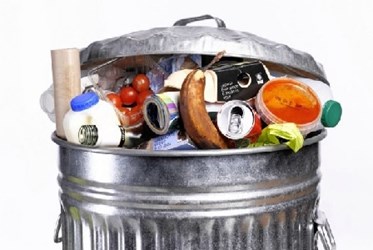Preventing Food Waste With Think.Eat.Save

By Sam Lewis

The U.N. Environment Programme has unveiled a new tool focused on reducing and preventing food waste and food loss
Each day, Americans dispose of nearly 1,400 calories of food. This is not only throwing away food that could create a food secure world, it’s fiscally irresponsible. To help remedy this issue, a new systematic approach to change the norms of food waste management has been released.
Think.Eat.Save Guidance Version 1.0, created by the U.N. Environment Programme (UNEP), offers a four-step method for governments, businesses, and other organizations to execute food saving techniques at every stage of the supply chain. The tool concentrates of finding large-scale solutions to food waste from the farm or factory all the way down to the end consumer’s plate. The Guidance also highlights household food waste and recommends consumers and food companies partner up to battle the issue at hand.
White Paper: What’s The Impact Of Big Data In The Cold Chain?
The first unit of the tool intends to help governments find where food waste occurs in the supply chain, how much waste is occurring, and what is causing it. This helps those involved become aware of the scale of the waste problem, integrate other systems already in place to reduce food waste, and set goals about how it can be reduced and by how much. After goals are set, creating legislation can begin.
The second part of the Guidance aims to develop policies for food waste prevention. It uses Japan’s Food Waste Recycling Law as the example of successful legislation. This law, amended in 2007, forces food companies to record waste activity and set targets to reduce those numbers. The law also offers incentives to businesses that recycle food waste into animal feeds and fertilizers.
Check out how Nestle improved its supply chain
Involving the government and creating new food waste regulations are a good way to abolish wasteful procedures done by food producers and food retailers. However, an unorthodox might serve as a better approach to tackling food waste at the household level. The third element of the Guidance outlines more community-based approaches to food waste. This third step is broken down into two fundamentals. First, households should implement an engagement effort, serving to raise awareness food waste and show advantages of reduction. At the individual consumer level this translates simply to money savings. Next, the tool suggests a change be made to how consumer products are made and labeled, making them more easily recycled.
Finally, the last module of the Guidance asks food manufacturers to integrate food waste reduction and prevention practices into corporate policies. An immediate investment in food waste reduction endeavors may be expensive, but in the long run, ventures in food waste reduction and prevention will likely garner double the cost of investment. Not to mention all the food that won’t be wasted.
